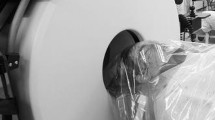Abstract
Nasal fractures represent approximately 60% of all maxillofacial injuries that occur in athletic activities; however, there are no current guidelines regarding immediate sideline management of these injuries. Therefore, the purpose of this article was to (1) summarize the anatomy, etiology, and incidence of nasal fractures, and (2) evaluate the current body of literature regarding immediate on-field and subsequent outpatient management. It is imperative to establish that the athlete’s airway is not compromised and there are no other severe concomitant injuries, such as a concussion, ocular injury, or leakage of cerebrospinal fluid. Immediate closed reduction should not be attempted unless there is airway compromise or the practitioner has experience in performing it. The majority of athletes with these injuries in isolation may return to play; however, in our practice, we recommend they wear a face mask for 6 weeks after their injury. Despite our recommendations, we know there is a paucity of clinical studies on immediate sideline and longer-term management. Future studies should focus on establishing therapeutic algorithms that will allow physicians to make treatment recommendations to patients with strong evidence to support their decision.
Similar content being viewed by others
References
Antoun JS, Lee KH. Sports-related maxillofacial fractures over an 11-year period. J Oral Maxillofac Surg. 2008;66(3):504–8.
Linn EW, Vrijhoef MM, de Wijn JR, et al. Facial injuries sustained during sports and games. J Maxillofac Surg. 1986;14(2):83–8.
Frenguelli A, Ruscito P, Bicciolo G, et al. Head and neck trauma in sporting activities. Review of 208 cases. J Craniomaxillofac Surg. 1991;19(4):178–81.
Carroll SM, Jawad MA, West M, et al. One hundred and ten sports related facial fractures. Br J Sports Med. 1995;29(3):194–5.
Romeo SJ, Hawley CJ, Romeo MW, et al. Sideline management of facial injuries. Curr Sports Med Rep. 2007;6(3):155–61.
Cannon CR, Cannon R, Young K, et al. Characteristics of nasal injuries incurred during sports activities: analysis of 91 patients. Ear Nose Throat J. 2011;90(8):E8–12.
Bartkiw TP, Pynn BR, Brown DH. Diagnosis and management of nasal fractures. Int J Trauma Nurs. 1995;1(1):11–8.
Sargent LA, Rogers GF. Nasoethmoid orbital fractures: diagnosis and management. J Craniomaxillofac Trauma. 1999;5(1):19–27.
Iida S, Kogo M, Sugiura T, et al. Retrospective analysis of 1502 patients with facial fractures. Int J Oral Maxillofac Surg. 2001;30(4):286–90.
Butler JSCF, Kearns F. Facial injuries. London: Churchill Livingstone Elsevier; 2010.
Exadaktylos AK, Eggensperger NM, Eggli S, et al. Sports related maxillofacial injuries: the first maxillofacial trauma database in Switzerland. Br J Sports Med. 2004;38(6):750–3.
Zandi M, Seyed Hoseini SR. The relationship between head injury and facial trauma: a case–control study. Oral Maxillofac Surg. 2013;17(3):201–7.
Jacobson JA, Kasworm EM. Toxic shock syndrome after nasal surgery. Case reports and analysis of risk factors. Arch Otolaryngol Head Neck Surg. 1986;112(3):329–32.
Daniel RK, Brenner KA. Saddle nose deformity: a new classification and treatment. Facial Plast Surg Clin North Am. 2006;14(4):301–12, vi.
Gilpin T, Carley S. Towards evidence based emergency medicine: best BETs from the Manchester Royal Infirmary. Early management of displaced nasal fractures. J Accid Emerg Med. 2000;17(4):286.
Yilmaz MS, Guven M, Kayabasoglu G, et al. Efficacy of closed reduction for nasal fractures in children. Br J Oral Maxillofac Surg. 2013;51(8):e256–8.
Fernandes SV. Nasal fractures: the taming of the shrewd. Laryngoscope. 2004;114(3):587–92.
Thiede O, Kromer JH, Rudack C, et al. Comparison of ultrasonography and conventional radiography in the diagnosis of nasal fractures. Arch Otolaryngol Head Neck Surg. 2005;131(5):434–9.
Hester TO, Campbell JP. Diagnosis and management of nasal trauma for primary care physicians. J Ky Med Assoc. 1997;95(9):386–92.
Nigam A, Goni A, Benjamin A, et al. The value of radiographs in the management of the fractured nose. Arch Emerg Med. 1993;10(4):293–7.
Logan M, O’Driscoll K, Masterson J. The utility of nasal bone radiographs in nasal trauma. Clin Radiol. 1994;49(3):192–4.
Stackhouse T. On-site management of nasal injuries. Phys Sportsmed. 1998;26(8):69–74.
Yabe T, Ozawa T, Sakamoto M, et al. Pre- and postoperative X-ray and computed tomography evaluation in acute nasal fracture. Ann Plast Surg. 2004;53(6):547–53.
Baek HJ, Kim DW, Ryu JH, et al. Identification of nasal bone fractures on conventional radiography and facial CT: comparison of the diagnostic accuracy in different imaging modalities and analysis of interobserver reliability. Iran J Radiol. 2013;10(3):140–7.
Perkins SW, Dayan SH, Sklarew EC, et al. The incidence of sports-related facial trauma in children. Ear Nose Throat J. 2000;79(8):632–4, 6, 8.
Lim TC, Mokal N, Tan WT. A self-retaining nasal splint. Br J Plast Surg. 1993;46(8):714–5.
Baliarsing A, Lim J, Lim TC, et al. The self-retaining nasal splint revisited. Br J Plast Surg. 2000;53(5):450.
Rhee SC, Kim YK, Cha JH, et al. Septal fracture in simple nasal bone fracture. Plast Reconstr Surg. 2004;113(1):45–52.
Author information
Authors and Affiliations
Corresponding author
Ethics declarations
Funding
No sources of funding were used to assist in the preparation of this article.
Conflicts of interest
Yashika Patel, Peter Goljan, Todd Pierce, Anthony Scillia, Kimona Issa, Vincent McInerney and Anthony Festa declare that they have no conflicts of interest relevant to the content of this article.
Rights and permissions
About this article
Cite this article
Patel, Y., Goljan, P., Pierce, T.P. et al. Management of Nasal Fractures in Sports. Sports Med 47, 1919–1923 (2017). https://doi.org/10.1007/s40279-017-0729-8
Published:
Issue Date:
DOI: https://doi.org/10.1007/s40279-017-0729-8




